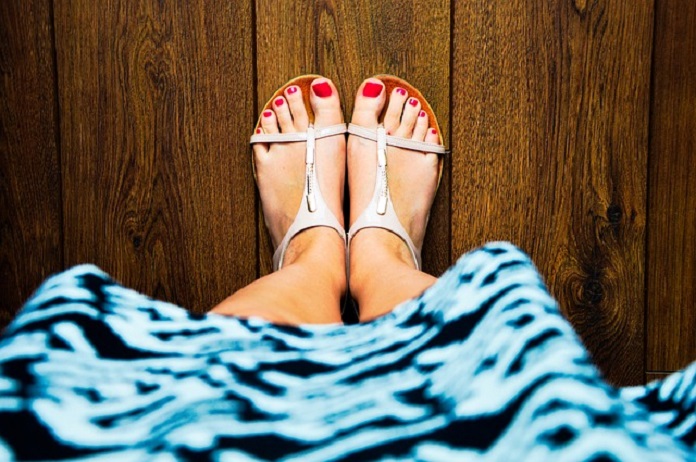A “turf toe” injury is when the largest joint of the big toe becomes sprained – usually around the ligaments (bands of tough elastic tissue) surrounding the big toe joint. It can be categorized as a sports injury. Sprains of the big toe are usually caused by a forceful pushing off of the toe or from jamming it.
What causes turf toe?
Anatomy
The big toe has two joints. The biggest one is called the metatarsophalangeal (MTP). The MTP joint connects the longest bone in the foot (metatarsal) to the first toe bone (phalanx). Surrounding this are ligaments and other structures that support and hold the joint in place. This is called the plantar complex.
The ligaments of the big toe are used to allow the up and down movement in the joints. The bones that move the big toe are found in the ball of the foot. The bones move like a pulley system, and they take on the body’s weight when the ball of the foot is pressed down on.
When walking or running, every step takes place by raising the heel of one foot and putting the body’s weight onto the ball of the other foot. The big toe works to push the weight off when stepping from foot to foot. If the big toe stays flat on the ground, instead of lifting to push off, then the joint can become injured.
Sports
Playing sports is a big risk factor for turf toe. Bending the big toe backwards, beyond how far it can normally go, results in the injury.
Athletes playing on artificial turfs, such as fake grass, experience turf toe more commonly because of how hard the surfaces are. In sports, such as soccer, it can also happen on regular grass surfaces. Players must wear supportive shoes, because if the shoes are too flexible then it can let the foot bend too far forward.
Symptoms of turf toe
Turf toe injuries, which cause damage to the plantar complex, can cause a range of mild to severe symptoms. Medical professionals assess the severity through a series of grades. Grade one is mild, and it happens when the plantar complex is overstretched. Grade two is moderate, and it results from a partial tear or rip in the plantar complex. Grade three is severe, and it is a complete tearing of the plantar complex.
The most commonly seen turf toe symptoms are pain, swelling and bruising, tenderness, and a decreased ability to move at the base of the big toe. On some occasions a “pop” can be felt in the big toe joint. Turf toe symptoms rarely happen suddenly. They develop over time and, if the injury is repeated, can gradually get worse. However, if it was caused by a sudden and forceful injury, then symptoms can immediately happen and peak within 24 hours.
Treatment for turf toe
At-home treatments
Treatment for turf toe depends on how severe the injury is. Normally, healthcare professionals will conduct a physical examination to determine the severity of the injury. For a very mild grade one sprain, at-home treatments can be used.
The RICE (rest, ice, compression, and elevation) method has shown to be the most helpful for sports-related injuries. It is important to rest and not repeat the activity that caused the injury. Using cold packs several times a day, for about 20 minutes each time, will help with the pain and swelling. Elastic compression bands are also good to use to decompress the injury. Elevating the leg is also helpful to reduce swelling. Over the counter medications can be taken for pain management.
Medical treatments
For persisting symptoms or a worse injury, it is important to see a medical professional. In some moderate grade two cases of turf toe, a walking boot or hard shoe will be prescribed to keep the foot immobile. This will allow it to heal.
For severe grade three cases, a walking boot or cast may also be needed. Other treatments can involve seeing a foot and ankle specialist (podiatrist) and possible surgery to repair the ligaments or joint.
People suffering from turf toe often see benefits after physical therapy. Specific exercises can stretch the big toe, helping it to heal and get stronger. Turf toe can cause long-term pain and stiffness of the joint. If left untreated, it can worsen over time. Following treatments, such as physical therapy, can help lessen the discomfort and increase range of motion.
Speaking to a healthcare professional is necessary if symptoms persist or worsen. Some signs of a turf toe injury that requires immediate treatment include a body fever, abnormalities in how the foot looks, toe numbness, and cold or pale feet.
Written by Melody Sayrany
References:
Aran, F., Ponnarasu, S., & Scott, A. T. (2020). Turf Toe. In StatPearls. StatPearls Publishing.
Chiou, D., Stupay, K. L., & Waryasz, G. (2020). Turf Toe Review. Foot & ankle specialist, 13(2), 161–168. https://doi.org/10.1177/1938640019857794
Kadakia, A. R., Alshouli, M. T., Barbosa, M. P., Briggs, D., & Mutawakkil, M. (2020). Turf Toe, Traumatic Hallux Valgus, and Hallux Rigidus -What Can I Do After an Metatarsophalangeal Fusion?. Clinics in sports medicine, 39(4), 801–818. https://doi.org/10.1016/j.csm.2020.07.007
Turf Toe. (n.d.). Cedars Sinai. Retrieved February 9, 2021, from https://www.cedars-sinai.org/health-library/diseases-and-conditions/t/turf-toe.html#:~:text=A%20%22turf%20toe%22%20is%20a,push%20off%20into%20a%20sprint.
Image by tookapic from Pixabay



